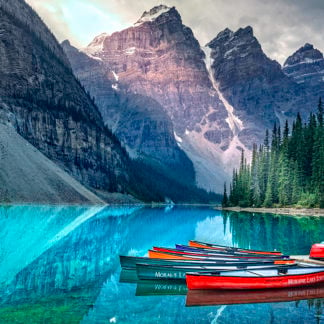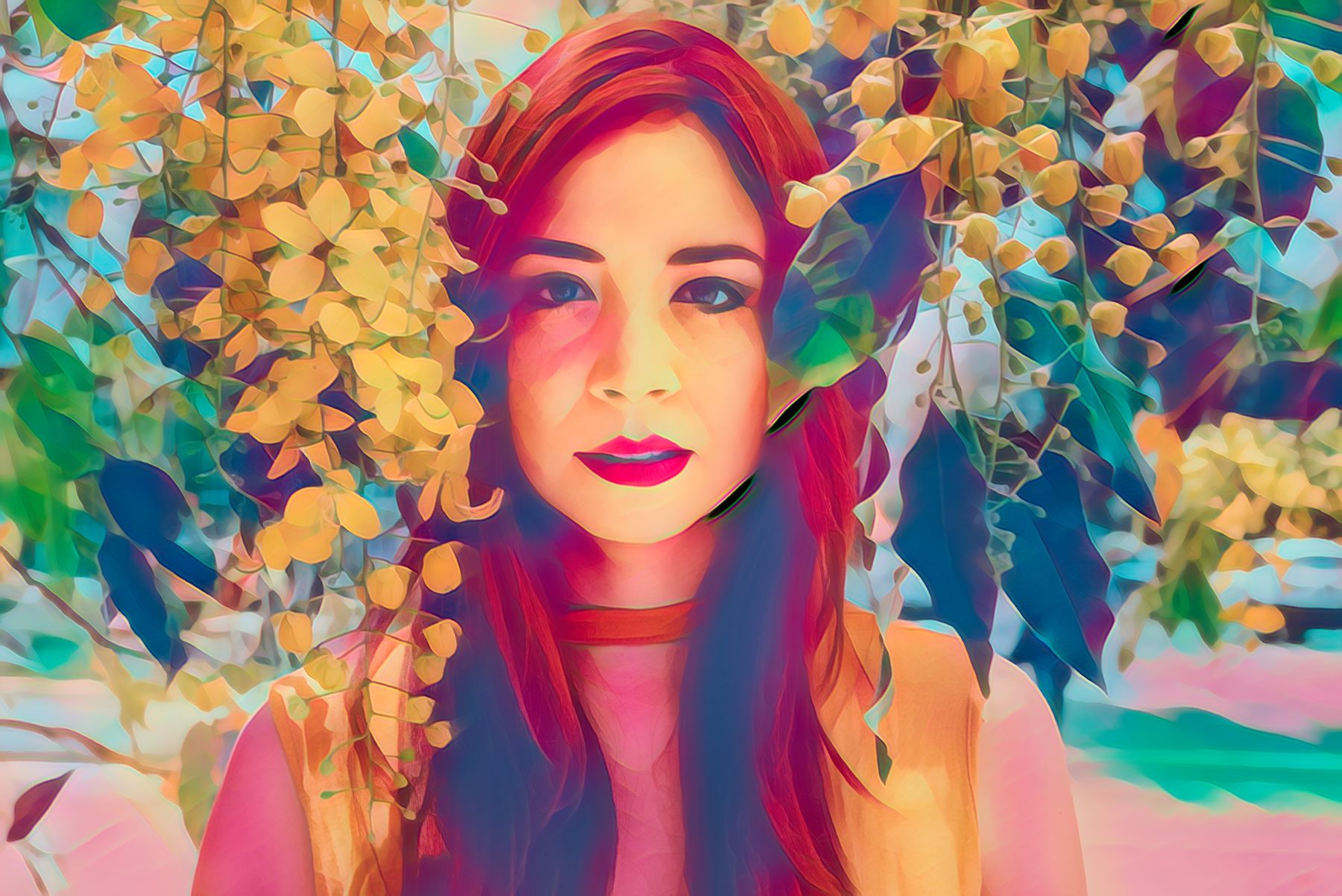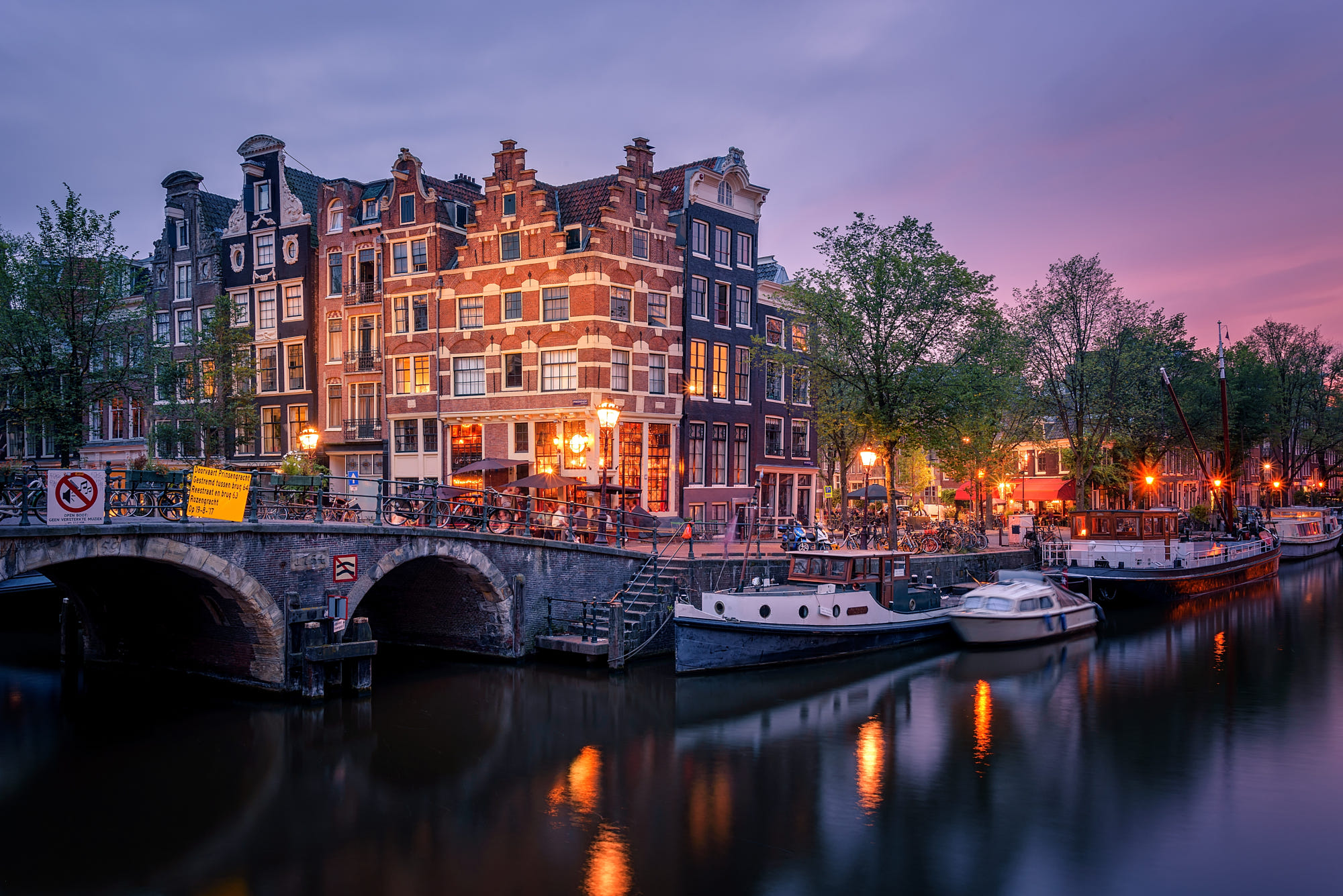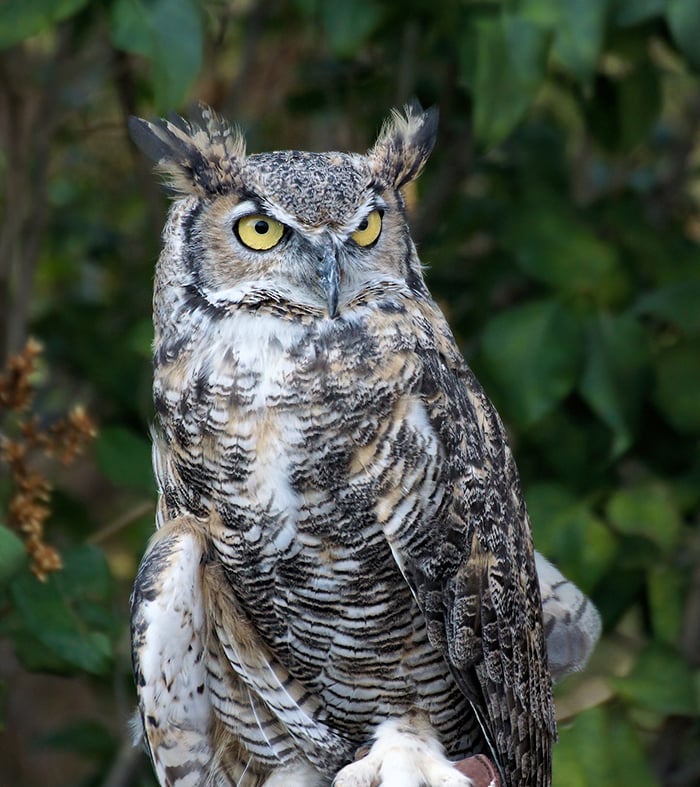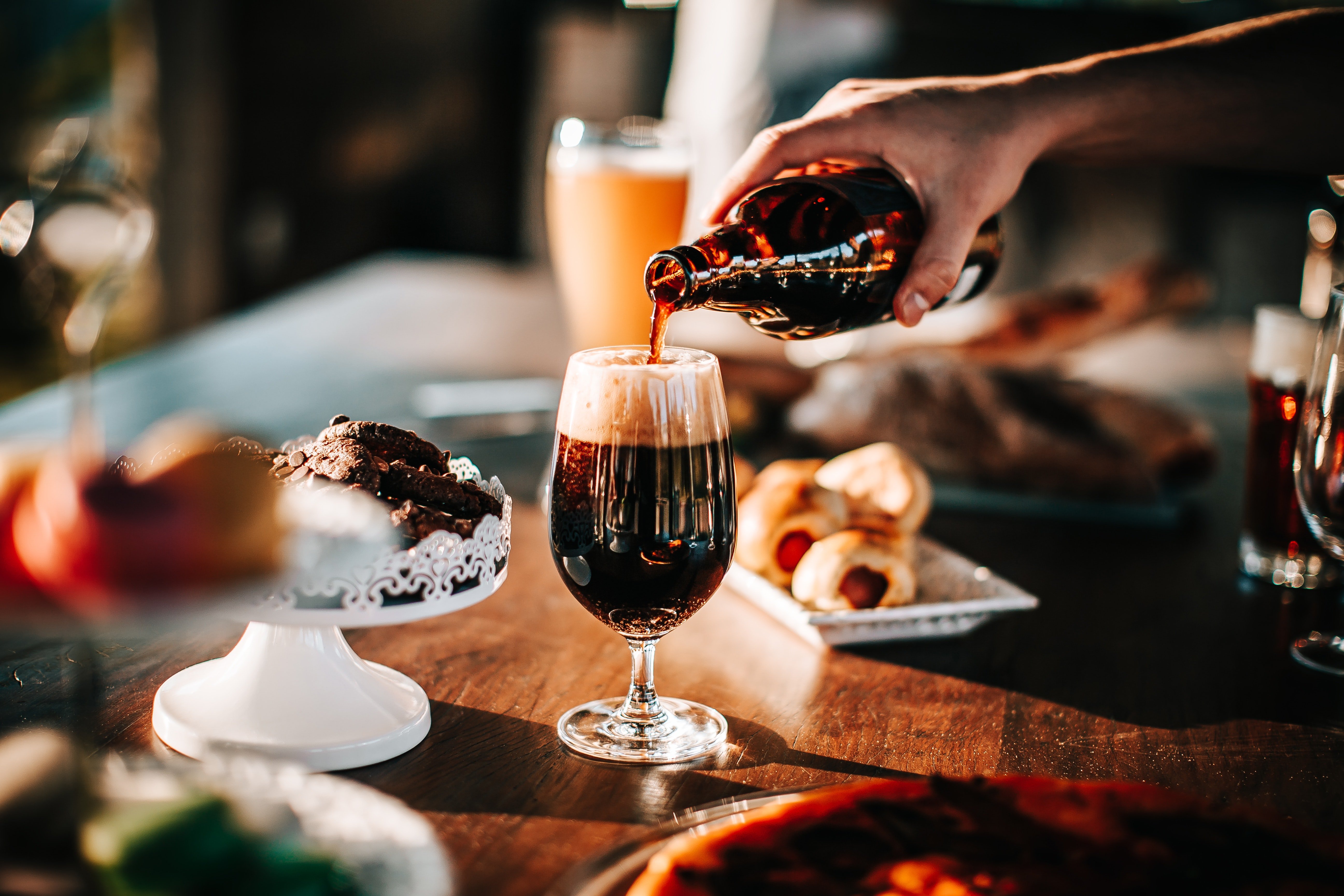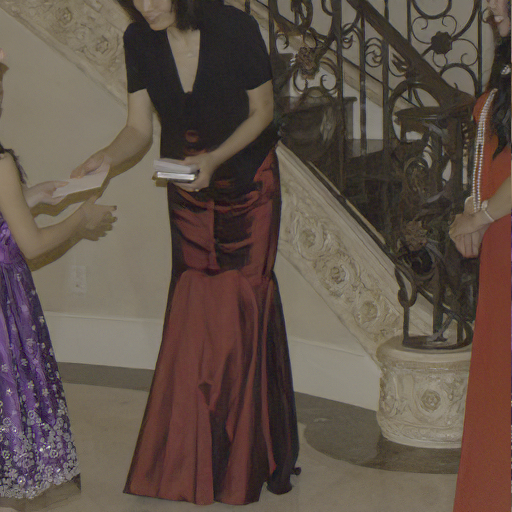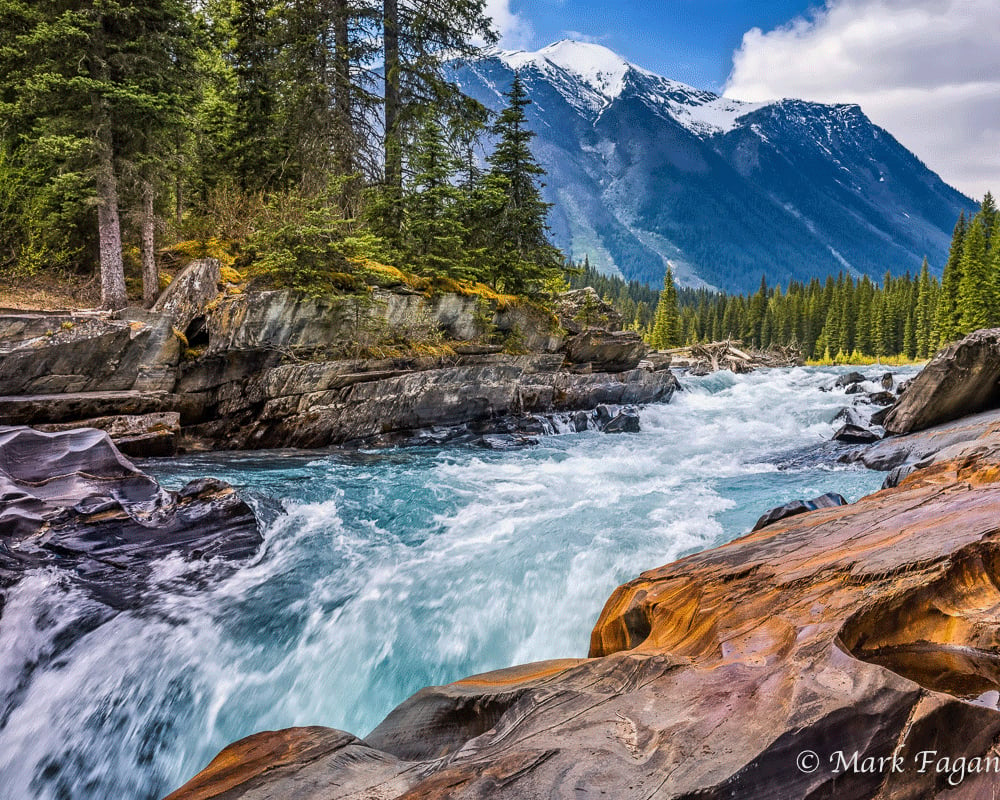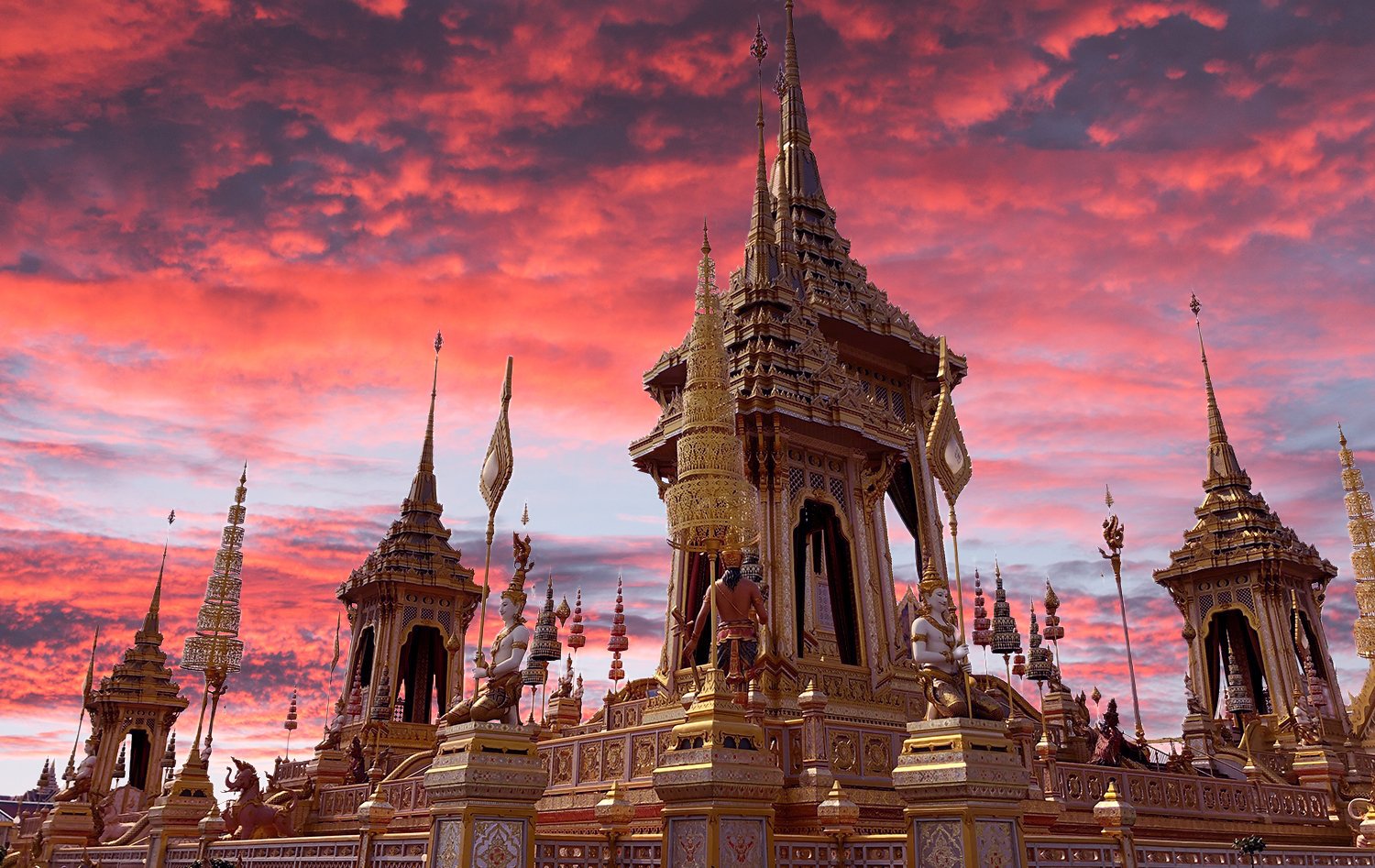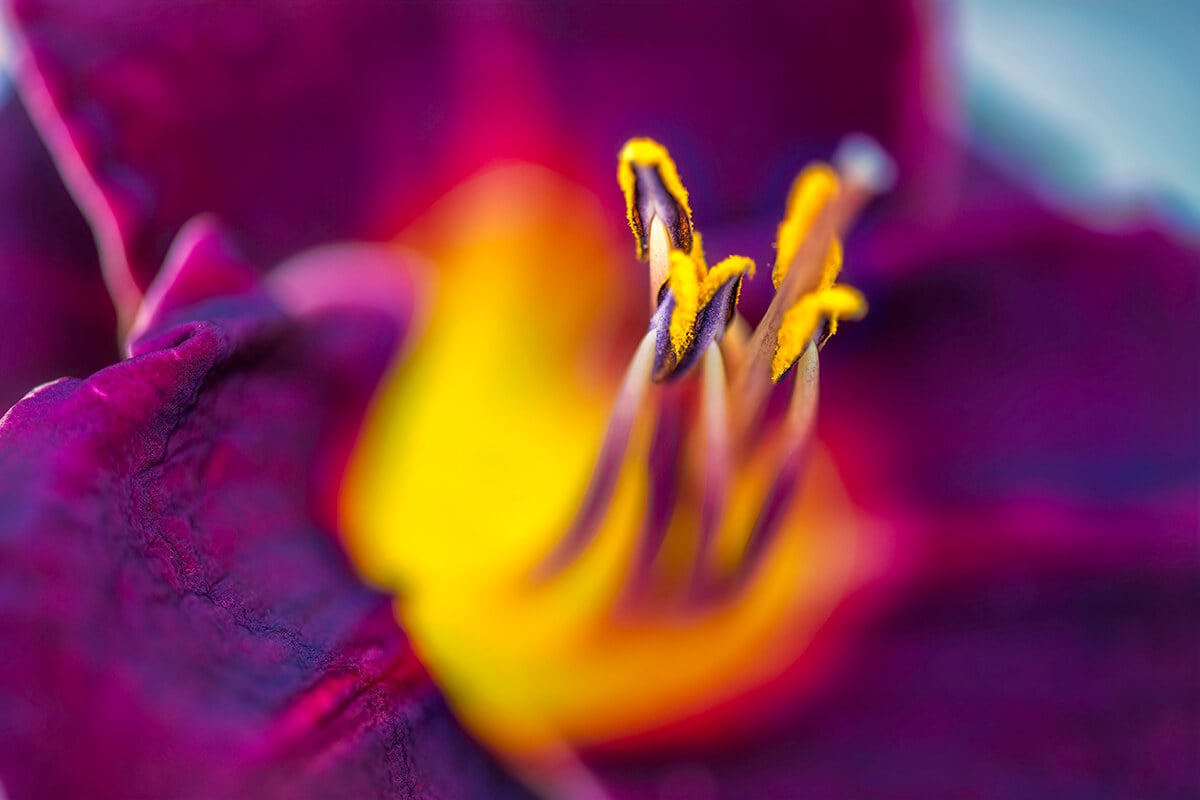
[vc_row][vc_column][vc_empty_space][vc_column_text]Tutorial created Topaz Studio V1.0.8[/vc_column_text][vc_empty_space height=”15px”][vc_column_text]
What is the Sharpen Adjustment?
[/vc_column_text][vc_empty_space height=”15px”][vc_column_text]The Topaz Studio Sharpen Adjustment is an awesome tool that allows you to emphasize details and bring all your photos into perfect focus. Even images that you feel are in focus become crisp after this adjustment.
About the Sharpen Adjustment. The Topaz Studio Sharpen Adjustment is really two for the price of one. You can use the unsharp mask option to sharpen images or reverse the affect of lens blur on an image using the Lens DeBlur option.
How they work. Each sharpening option contains unique technology to ensure you have perfectly sharpened images. The Unsharp Mask works by utilizing an unsharpening mask to enhance details. The Lens DeBlur option is one of my favorites. It has some really unique technology behind it. It does an amazing job of removing lens blur, but keeping your image looking natural. Lens DeBlur uses the blind deconvolution process to mathematically recover image sharpness. This technology has the ability to analyze your image, and based upon the output image, can make an educated guess on the intended input image. The result is restored image quality, but it isn’t a cookie cutter filter. It is specifically tailored sharpening effect applied to each of your images and it truly works wonders.[/vc_column_text][/vc_column][/vc_row][vc_row][vc_column][vc_empty_space][vc_column_text]
Free Download
[/vc_column_text][vc_empty_space height=”15px”][vc_column_text]The Sharpen Adjustment is available within Topaz Studio as a Pro Adjustment. While Pro Adjustments are not free, Topaz Studio is completely free and there are limited functionality within the Sharpen Adjustment that is completely free. You can also try all the unlocked functionality for 30 days, completely commitment free. If you’d like to follow along with the Sharpen Adjustment, you can click the links below to download Topaz Studio.[/vc_column_text][vc_empty_space height=”15px”][vc_row_inner][vc_column_inner width=”1/2″][vc_btn title=”Windows” shape=”square” color=”primary” align=”center” button_block=”true” link=”url:https%3A%2F%2Fopen_beta.s3.amazonaws.com%2Ftopazstudio_online_installer.exe|||”][/vc_column_inner][vc_column_inner width=”1/2″][vc_btn title=”Mac” shape=”square” color=”primary” align=”center” button_block=”true” link=”url:https%3A%2F%2Fopen_beta.s3.amazonaws.com%2Ftopazstudio_online_installer.dmg|||”][/vc_column_inner][/vc_row_inner][/vc_column][/vc_row][vc_row][vc_column][vc_empty_space][vc_column_text]
What We Will Cover in This Tutorial
[/vc_column_text][vc_empty_space height=”15px”][vc_column_text]1. About the Sharpen Adjustment
2. How to use the Unsharp Mask
3. How to use Lens DeBlur[/vc_column_text][/vc_column][/vc_row][vc_row][vc_column][vc_empty_space][vc_column_text]
Reading not your Thing? Watch the Full Tutorial!
[/vc_column_text][vc_column_text]Feel free to watch me work through all the features the Sharpen Adjustment has to offer. Every step outlined in this blog post is demonstrated in this video as well as the gallery images at the end of this posting. Hope you enjoy it![/vc_column_text][vc_empty_space height=”15px”][vc_video link=”https://youtu.be/S_dPhDWvfWc” el_width=”80″ align=”center”][vc_empty_space][/vc_column][/vc_row][vc_row][vc_column][vc_column_text]
1. What is the Sharpen Adjustment?
[/vc_column_text][vc_row_inner][vc_column_inner width=”2/3″][vc_empty_space height=”15px”][vc_single_image image=”50874″ img_size=”large”][/vc_column_inner][vc_column_inner width=”1/3″][vc_empty_space][vc_empty_space][vc_empty_space][vc_column_text]Here at Topaz, we wanted to make it effortless to sharpen images, so we kept this adjustment nice and simple. The Unsharp Mask option features 3 sliders and the Lens DeBlur option has only two sliders. After you apply the Sharpen Adjustment to your image, you will see a 3 slider panel pop up in the adjustments panel (If you don’t, click the blue Try Pro link at the bottom of the panel).[/vc_column_text][/vc_column_inner][/vc_row_inner][vc_empty_space][/vc_column][/vc_row][vc_row][vc_column][vc_column_text]
Breakdown of the Sliders
[/vc_column_text][vc_row_inner][vc_column_inner width=”1/4″][vc_empty_space height=”15px”][vc_single_image image=”50882″ img_size=”large”][vc_empty_space height=”15px”][vc_single_image image=”50884″ img_size=”large”][/vc_column_inner][vc_column_inner width=”3/4″][vc_empty_space][vc_empty_space][vc_column_text]
Select Sharpen Type:
1. Unsharp Mask:
Select the Unsharp mask to create a clearer, sharper image. The Unsharp Mask utilizes unsharpening mask technology to create naturally looking, sharper images by using the image to get the base layer instead of just cookie cutter contrast sharpening.
2. Lens DeBlur:
Use Lens DeBlur to correct image blur. This type of sharpening utilizes the blind deconvolution process to mathematically correct images. The technology in Lens DeBlur analyzes the output image and has the ability to make educated guesses on the intended input to correct blurred images.
The sliders and what they do:
1. Strength:
Increasing the value of this slider increases the the overall strength of the selected sharpen type within the Sharpen Adjustment.
2. Radius:
This slider is only available for the Unsharp Mask. Increasing this slider will increase how strong the contrast of the edge of the Sharpening Mask is.
3. Threshold:
Increasing the value of this slider will increase the amount of details that are untouched by the Sharpen Adjustment. Utilizing this slider will allow for sharper images, but block out distracting image noise and artifacts.[/vc_column_text][vc_empty_space][/vc_column_inner][/vc_row_inner][vc_empty_space][/vc_column][/vc_row][vc_row][vc_column][vc_column_text]
Apply the Sharpen Adjustment to Your Image
[/vc_column_text][vc_empty_space height=”15px”][vc_row_inner][vc_column_inner width=”2/3″][vc_empty_space height=”15px”][vc_single_image image=”50919″ img_size=”full” alignment=”center”][/vc_column_inner][vc_column_inner width=”1/3″][vc_empty_space][vc_column_text]Before we get started, you’ll want to open an image. If this is your first time opening Topaz Studio, you’ll notice that there is a lot of empty fields. This is because you’ll need to open an image to get started! There is more than one way that you can open an image .
- Drag and drop an image from your computer into the program.
- Click Open (located in the Canvas) and navigate through your files. Select an image and click Open.
- Click Open in the menu bar. Select an image and click Open.
- Go to Menu > File > Open Image… and then select an image and click Open.
- Use your shortcut keys (such as Command O or Control O).
[/vc_column_text][/vc_column_inner][/vc_row_inner][vc_empty_space][/vc_column][/vc_row][vc_row][vc_column][vc_column_text]
Apply the Adjustment to Your Image
[/vc_column_text][vc_row_inner][vc_column_inner width=”2/3″][vc_empty_space height=”15px”][vc_single_image image=”50931″ img_size=”large”][/vc_column_inner][vc_column_inner width=”1/3″][vc_empty_space][vc_empty_space][vc_column_text]After you have successfully opened an image, you will want to apply the Sharpen Adjustment. This can be done one of two ways:
- Clicking Adjustments > Sharpen from the top Menu Bar.
- Clicking More > Sharpen from the Adjustment tool bar located on the right-hand side of your workspace.
By default, the Unsharp Mask option will be selected. You can switch to the Lens DeBlur option by moving the toggle to the right.[/vc_column_text][/vc_column_inner][/vc_row_inner][vc_empty_space][/vc_column][/vc_row][vc_row][vc_column][vc_column_text]
2. Unsharp Mask
[/vc_column_text][vc_row_inner][vc_column_inner width=”2/3″][vc_empty_space height=”15px”][vc_single_image image=”50986″ img_size=”large” alignment=”center”][/vc_column_inner][vc_column_inner width=”1/3″][vc_empty_space][vc_empty_space][vc_column_text]The Unsharp Mask works great to amplify small details. I love using it on macro and plant photography. Even on images that I think are in perfect focus, can benefit from an added touch of the Unsharp Mask. When you are focusing on the small details, I suggest zooming in so you can really see how it is affecting your image. We organized the sliders to reflect the most logical workflow, so start with the Strength slider and work your way down. Also, remember it’s ok if there is some artifacts and image noise introduced by the Strength and Radius slider. The Threshold slider does an amazing job of blocking all of it out.[/vc_column_text][/vc_column_inner][/vc_row_inner][vc_empty_space][/vc_column][/vc_row][vc_row][vc_column][vc_column_text]
The Settings
[/vc_column_text][vc_row_inner][vc_column_inner width=”1/4″][vc_empty_space height=”15px”][vc_single_image image=”50964″ img_size=”large”][/vc_column_inner][vc_column_inner width=”3/4″][vc_empty_space][vc_empty_space][vc_column_text]Here are the settings I used for the Unsharp Mask. You can make these edits as subtle or extreme as you would like. Another thing I love to do with the Sharpen Adjustment is to use the integrated masking to mask out the effect in some areas to create a very strong focal area.[/vc_column_text][/vc_column_inner][/vc_row_inner][vc_empty_space][vc_column_text]
Here is the before, after, and magnified comparison:
[/vc_column_text][vc_empty_space height=”15px”][vc_row_inner][vc_column_inner width=”1/3″][vc_single_image image=”51170″ img_size=”large” alignment=”center” onclick=”link_image”][vc_empty_space height=”15px”][vc_column_text]
Before
[/vc_column_text][/vc_column_inner][vc_column_inner width=”1/3″][vc_single_image image=”51174″ img_size=”large” alignment=”center” onclick=”link_image”][vc_empty_space height=”15px”][vc_column_text]
After
[/vc_column_text][/vc_column_inner][vc_column_inner width=”1/3″][vc_single_image image=”51186″ img_size=”large” alignment=”center” onclick=”link_image”][vc_empty_space height=”15px”][vc_column_text]
Magnified
[/vc_column_text][/vc_column_inner][/vc_row_inner][vc_empty_space height=”15px”][vc_column_text]I love how the Unsharp Mask is able to bring out the small details of the leaves without magnifying the image noise or creating artifacts. The result is a perfectly natural looking, sharpened image.[/vc_column_text][vc_empty_space][/vc_column][/vc_row][vc_row][vc_column][vc_column_text]
3. Lens DeBlur
[/vc_column_text][vc_empty_space height=”15px”][vc_column_text]For the next part of this tutorial, I’m going to be demonstrating how to use Lens DeBlur. Feel free to save the image and follow along to test out Lens DeBlur for yourself.
Blurry photos can be a result of multiple things such as impurities in the air or due to lower end lenses. Lens DeBlur works wonders on photos. This simple, but effective tool turns photos that were shot with a $200 lens look like they were shot with a $3000 lens.
The algorithm behind Lens DeBlur analyses your photo and using the blind deconvolution process, mathematically reverse lens blur. It creates a tailored filter for each image. This yields much better results because you aren’t getting a cookie cutter filter for every image. I find myself being surprised at the results I get from images I didn’t even feel were blurry.[/vc_column_text][vc_empty_space height=”15px”][vc_single_image image=”51207″ img_size=”large” alignment=”center” onclick=”link_image”][vc_empty_space][vc_column_text]
Apply the Sharpen Adjustment and Switch to Lens DeBlur
[/vc_column_text][vc_row_inner][vc_column_inner width=”2/3″][vc_empty_space height=”15px”][vc_single_image image=”51220″ img_size=”large” alignment=”center” onclick=”link_image”][/vc_column_inner][vc_column_inner width=”1/3″][vc_empty_space][vc_empty_space][vc_empty_space][vc_column_text]Like before, you are going to apply the Sharpen Adjustment to the image, but this time switch the toggle to the Lens DeBlur option.[/vc_column_text][/vc_column_inner][/vc_row_inner][vc_empty_space][vc_row_inner][vc_column_inner width=”2/3″][vc_empty_space height=”15px”][vc_single_image image=”51241″ img_size=”large” alignment=”center”][/vc_column_inner][vc_column_inner width=”1/3″][vc_empty_space][vc_empty_space][vc_empty_space][vc_column_text]When you first see this image, I personally wouldn’t categorize this as a blurry image. Once you start adding Lens DeBlur, it is extremely evident just how crips this image could be! I always zoom way in when I’m working with the Sharpen Adjustment, so I can really see how it is affecting my image. My goal for this image was to make the trees more distinct and the mountain more prominent against the cloudy sky.[/vc_column_text][/vc_column_inner][/vc_row_inner][vc_empty_space][vc_column_text]
The Settings
[/vc_column_text][vc_row_inner][vc_column_inner width=”1/4″][vc_empty_space height=”15px”][vc_single_image image=”51246″ img_size=”large” alignment=”center” onclick=”link_image”][/vc_column_inner][vc_column_inner width=”3/4″][vc_empty_space][vc_empty_space][vc_column_text]If you would like to duplicate the settings here are what I used for the mountain image. Like the Unsharp Mask, the Threshold slider in the Lens DeBlur option will block out artifacts and image noise. With these two sliders, you can bring focus back to images in seconds.[/vc_column_text][/vc_column_inner][/vc_row_inner][vc_empty_space][/vc_column][/vc_row][vc_row][vc_column][vc_column_text]
Here is the before, after, and magnified comparison:
[/vc_column_text][vc_empty_space height=”15px”][vc_row_inner][vc_column_inner width=”1/3″][vc_single_image image=”51319″ img_size=”large” alignment=”center” onclick=”link_image”][vc_empty_space height=”15px”][vc_column_text]
Before
[/vc_column_text][/vc_column_inner][vc_column_inner width=”1/3″][vc_single_image image=”51320″ img_size=”large” alignment=”center” onclick=”link_image”][vc_empty_space height=”15px”][vc_column_text]
After
[/vc_column_text][/vc_column_inner][vc_column_inner width=”1/3″][vc_single_image image=”51324″ img_size=”large” alignment=”center” onclick=”link_image”][vc_empty_space height=”15px”][vc_column_text]
Magnified
[/vc_column_text][/vc_column_inner][/vc_row_inner][vc_empty_space height=”15px”][vc_column_text]You can see that Lens DeBlur brought a lot of the detail back in the mountain and the trees. The best part is that it looks completely natural. The result isn’t one of those images that have obviously been post-processed.[/vc_column_text][vc_empty_space][/vc_column][/vc_row][vc_row][vc_column][vc_column_text]
Bonus: Don’t Forget all the Other Functionality
[/vc_column_text][vc_empty_space height=”15px”][vc_row_inner][vc_column_inner width=”1/4″][vc_empty_space height=”15px”][vc_single_image image=”51251″ img_size=”large”][/vc_column_inner][vc_column_inner width=”3/4″][vc_column_text]Don’t forget that Topaz Studio has a lot of built in functionality that allows you to perfect how each adjustment affects your image. Each adjustment has the functionality built right into the header next to its name. You will find adjustment level masking, an opacity slider, 28 blending modes, and the ability to duplicate the adjustment! Also, don’t forget that if you are ever curious if you own a Pro Adjustment, the blue box around the icon in the adjustment stack indicates you have complete, unlocked functionality of that adjustment.[/vc_column_text][/vc_column_inner][/vc_row_inner][vc_empty_space][/vc_column][/vc_row][vc_row][vc_column][vc_column_text]
Adjustment Level Masking
[/vc_column_text][vc_row_inner][vc_column_inner width=”1/6″][vc_empty_space height=”15px”][vc_single_image image=”46805″ img_size=”medium” alignment=”center”][/vc_column_inner][vc_column_inner width=”5/6″][vc_column_text]One of the tools I use the most is the adjustment level masking. Combine the Sharpen Adjustment with the adjustment level masking to make interesting focal areas. While I won’t go in depth about it here, I wanted to make sure you knew it existed and is amazing! The brush masking has this awesome functionality called edge aware. So there is no need to create the perfect mask, just keep the edge of your subject between the green and red circles and it will do all the heavy lifting for you! If you’d like an in-depth tutorial about Masking, you can learn about Topaz Studio Masking here.[/vc_column_text][/vc_column_inner][/vc_row_inner][vc_empty_space][/vc_column][/vc_row][vc_row][vc_column][vc_column_text]
Saving Your Custom Effect
[/vc_column_text][vc_row_inner][vc_column_inner width=”1/6″][vc_empty_space height=”15px”][vc_single_image image=”46824″ img_size=”medium” alignment=”center”][vc_empty_space height=”15px”][vc_single_image image=”46825″ img_size=”medium” alignment=”center”][/vc_column_inner][vc_column_inner width=”5/6″][vc_column_text]Save and Share Your Effects. If you end up really liking an effect, you can save it to quickly apply in next time! You can either save the effect as a preset level (top icon) or global effect (bottom icon). Global presets allow you to share your creation with others by selecting ‘Yes’ in the Public field. Your effect will be shared to the entire Topaz Community instantly![/vc_column_text][/vc_column_inner][/vc_row_inner][vc_empty_space][/vc_column][/vc_row][vc_row][vc_column][vc_column_text]
Gallery
[/vc_column_text][vc_column_text]You can apply the same effect quickly and effortlessly by adding your new custom preset level effect to many images and then tweaking it to each individual image. This can be great if you took multiple images with similar camera settings and you want all of them to be a little sharper. Here are some more before and after images I edited. Thanks for reading and hope you’ve gained a little more understanding of the Sharpen Adjustment![/vc_column_text][vc_column_text]
Unsharp Mask
[/vc_column_text][vc_row_inner][vc_column_inner width=”1/2″][vc_empty_space height=”15px”][vc_column_text]
Before
[/vc_column_text][vc_empty_space height=”15px”][vc_single_image image=”51405″ img_size=”large” alignment=”center” onclick=”link_image”][vc_empty_space height=”15px”][vc_single_image image=”51409″ img_size=”large” alignment=”center” onclick=”link_image”][/vc_column_inner][vc_column_inner width=”1/2″][vc_empty_space height=”15px”][vc_column_text]
After
[/vc_column_text][vc_empty_space height=”15px”][vc_single_image image=”51401″ img_size=”large” alignment=”center” onclick=”link_image”][vc_empty_space height=”15px”][vc_single_image image=”51413″ img_size=”large” alignment=”center” onclick=”link_image”][/vc_column_inner][/vc_row_inner][vc_empty_space][vc_column_text]
Lens DeBlur
[/vc_column_text][vc_row_inner][vc_column_inner width=”1/2″][vc_empty_space height=”15px”][vc_column_text]
Before
[/vc_column_text][vc_empty_space height=”15px”][vc_single_image image=”51392″ img_size=”large” alignment=”center” onclick=”link_image”][vc_empty_space height=”15px”][vc_single_image image=”51399″ img_size=”large” alignment=”center” onclick=”link_image”][/vc_column_inner][vc_column_inner width=”1/2″][vc_empty_space height=”15px”][vc_column_text]
After
[/vc_column_text][vc_empty_space height=”15px”][vc_single_image image=”51393″ img_size=”large” alignment=”center” onclick=”link_image”][vc_empty_space height=”15px”][vc_single_image image=”51400″ img_size=”large” alignment=”center” onclick=”link_image”][/vc_column_inner][/vc_row_inner][vc_empty_space][/vc_column][/vc_row][vc_row][vc_column][vc_column_text]
Thanks for Reading!
[/vc_column_text][vc_column_text]That’s all I have for today! That’s all the basic functionality that is contained in the Sharpen Adjustment. I wanted to keep this tutorial short and sweet, so I encourage you to play with all the functionality such as masking and the pre-made effects.
We’ll be adding more tutorials and videos so be sure to give us a follow to learn more!
If you’d like to share your images with us, tag us on Instagram with @topazlabs and Twitter with @topazlabs. We’re also on Facebook and YouTube![/vc_column_text][vc_empty_space][/vc_column][/vc_row][vc_row][vc_column][vc_empty_space][vc_column_text]
Free Download
[/vc_column_text][vc_empty_space height=”15px”][vc_row_inner][vc_column_inner width=”1/2″][vc_btn title=”Windows” shape=”square” color=”primary” align=”center” button_block=”true” link=”url:https%3A%2F%2Fopen_beta.s3.amazonaws.com%2Ftopazstudio_online_installer.exe|||”][/vc_column_inner][vc_column_inner width=”1/2″][vc_btn title=”Mac” shape=”square” color=”primary” align=”center” button_block=”true” link=”url:https%3A%2F%2Fopen_beta.s3.amazonaws.com%2Ftopazstudio_online_installer.dmg|||”][/vc_column_inner][/vc_row_inner][/vc_column][/vc_row][vc_row][vc_column][vc_empty_space height=”15px”][vc_separator border_width=”3″][vc_empty_space height=”15px”][vc_column_text]
About Taylor L. Seaton
[/vc_column_text][vc_empty_space height=”15px”][vc_row_inner][vc_column_inner width=”1/6″][vc_single_image image=”8720″ img_size=”medium” alignment=”center” style=”vc_box_circle_2″][/vc_column_inner][vc_column_inner width=”5/6″][vc_empty_space][vc_column_text]Taylor Seaton is a 2016 graduate from Angelo State University. While attending ASU, she obtained her Bachelor of Fine Arts with a concentration in Graphic Design and an area of emphasis in Business Management and Marketing. She also played volleyball at the collegiate level. She is currently the Social Media Manager at Topaz Labs.[/vc_column_text][/vc_column_inner][/vc_row_inner][vc_empty_space height=”15px”][vc_separator border_width=”3″][vc_empty_space height=”15px”][/vc_column][/vc_row]

 [/vc_column_text][vc_empty_space height=”15px”][vc_column_text]Don’t have Topaz Studio? Topaz Studio is free to download! You can get it now by using the links below. If you need more information about Topaz Studio, check out this overview:
[/vc_column_text][vc_empty_space height=”15px”][vc_column_text]Don’t have Topaz Studio? Topaz Studio is free to download! You can get it now by using the links below. If you need more information about Topaz Studio, check out this overview:
